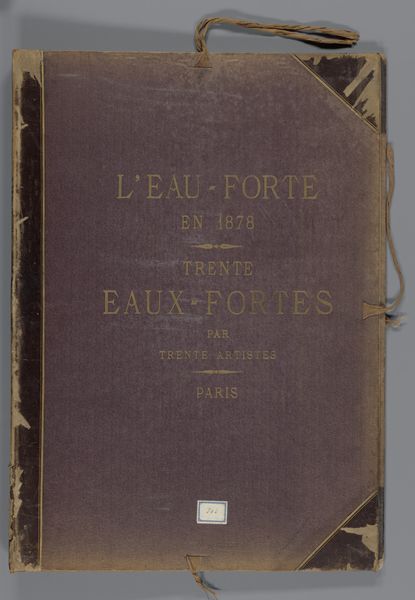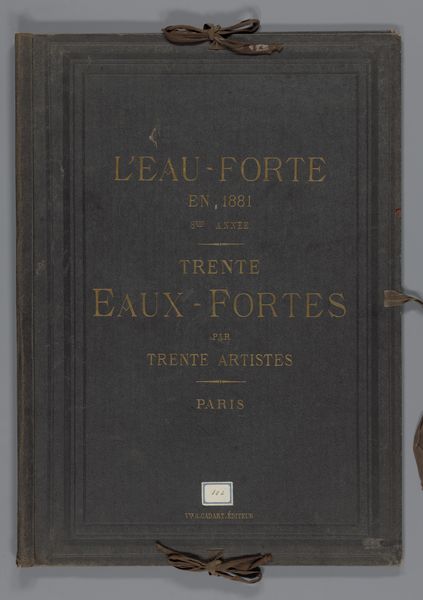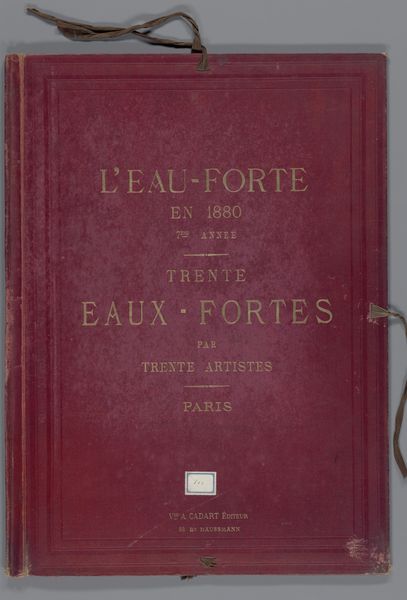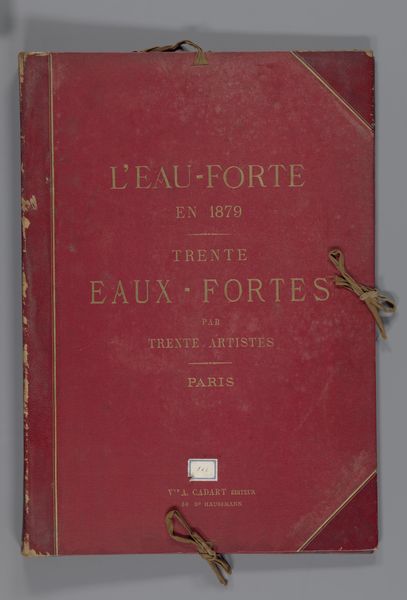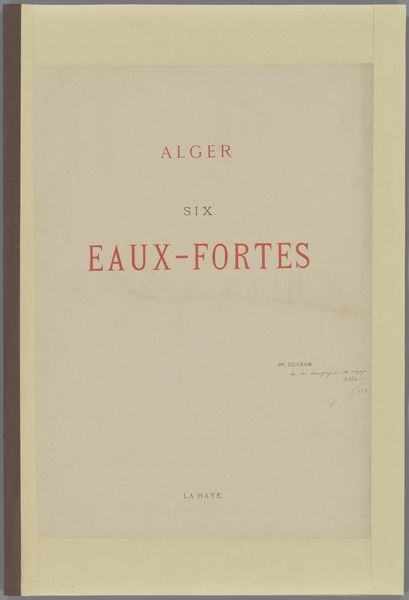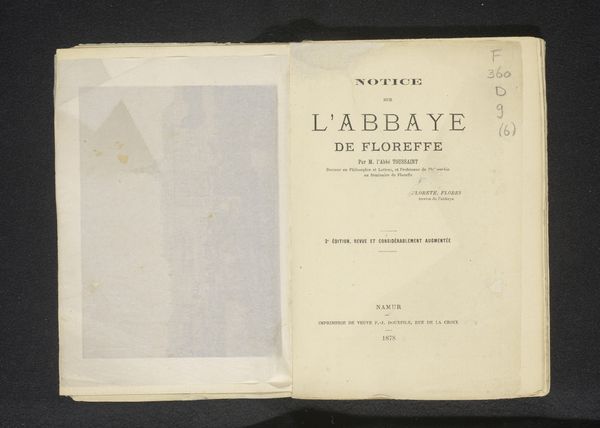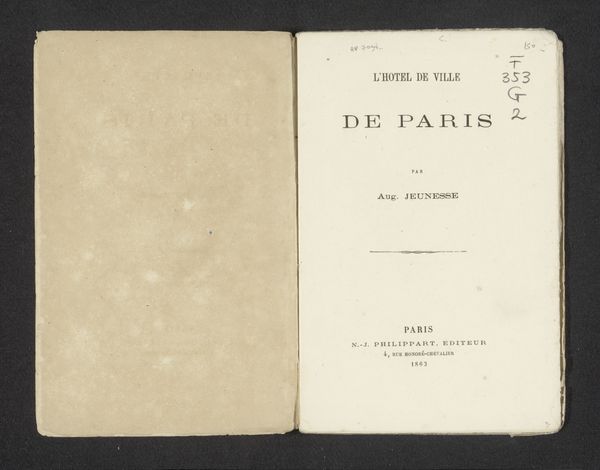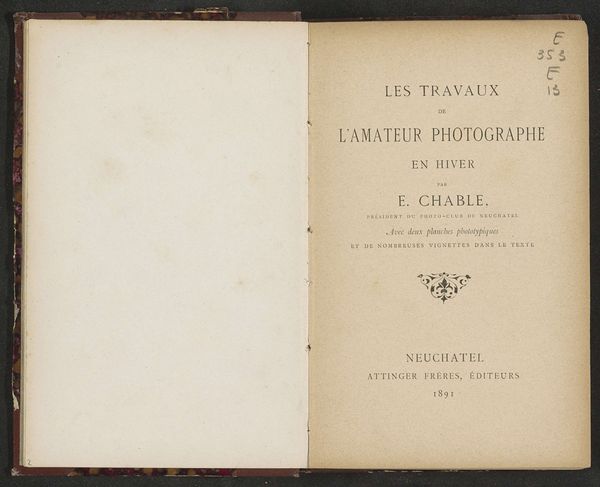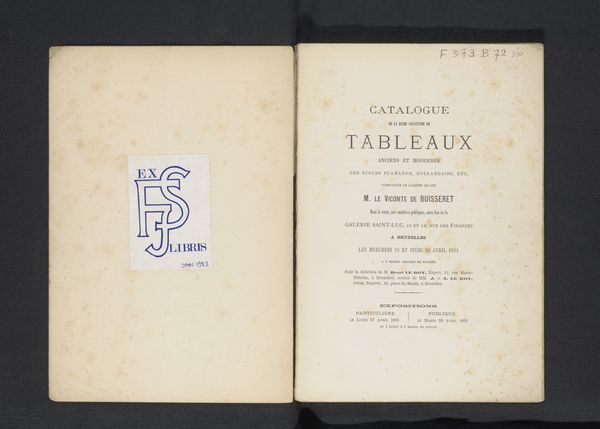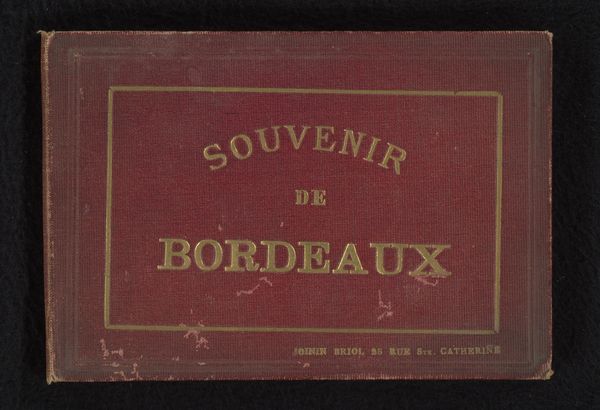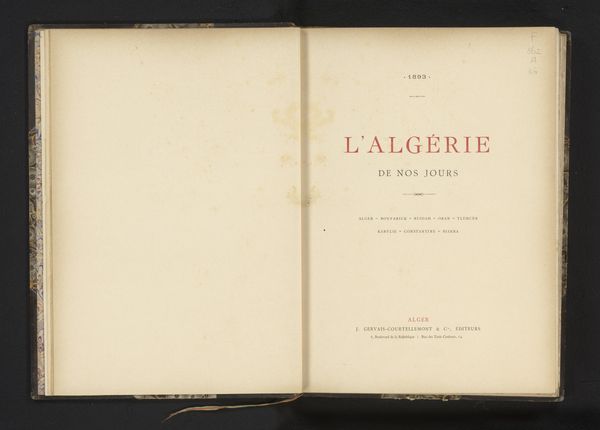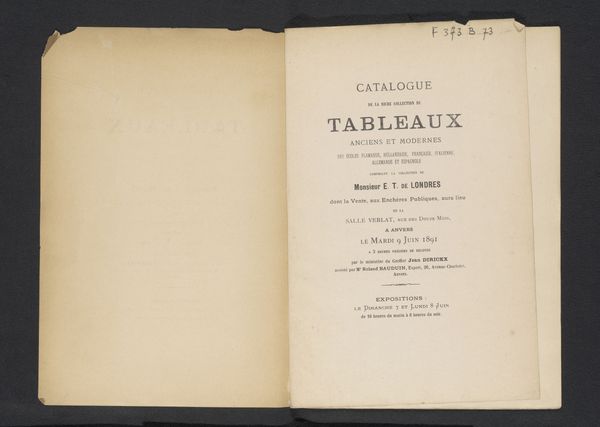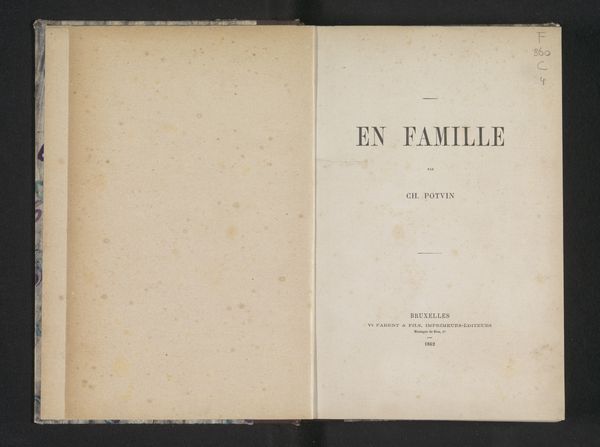
Omslag voor 23 prenten met landschappen, stadsgezichten en figuren en 8 tekstbladen 1876
0:00
0:00
graphic-art, print, etching
#
graphic-art
# print
#
impressionism
#
etching
#
book
Dimensions: height 540 mm, width 382 mm, thickness 30 mm, width 785 mm
Copyright: Rijks Museum: Open Domain
Curator: Here we have the cover for a collection of etchings from 1876, entitled "Omslag voor 23 prenten met landschappen, stadsgezichten en figuren en 8 tekstbladen" created by the studio of Weduwe Alfred Cadart. It resides here at the Rijksmuseum. Editor: It’s rather unassuming, isn’t it? The subdued palette and simple typography evoke a sense of established tradition, of something valued and carefully preserved. Curator: Indeed. Consider the composition—the vertical orientation, the central alignment of the text, and the almost perfectly symmetrical placement. These design elements lend a sense of formality, appropriate for its time and function as a compilation album of landscapes, cityscapes and figure studies. Editor: I notice the recurring motif of "thirty." The title specifies that the album contains thirty etchings from thirty different artists in Paris. What does this tell us about artistic community at that time? Were they trying to reflect some unity between artists? Curator: The "L’Eau-Forte" translates to "Etching" a fitting claim to truth considering that etching held cultural value. It can also be seen as a way to promote up-and-coming etchers. In terms of design and cultural references, it's hard to escape. Editor: Those cord fastenings remind me of keepsakes tied with ribbon, promising to protect the fragile art held within. What can you say about its function? Curator: Its functionality stems from being designed as a book cover, that it served as not just a covering, but it was itself to act as art to present the contents inside. Editor: It appears a time capsule capturing Parisian artistic endeavor from 1876 through one studio. I almost get the sense that this book cover functions as its own symbolic cityscape! Curator: Interesting observation! That is what I feel art really tries to encapsulate through design, to promote something so people are moved to look. Editor: So ultimately we end with the symbolic landscape of art within society and to find what it communicates today. Curator: Exactly. An impressive album reflecting the zeitgeist, a moment in time.
Comments
No comments
Be the first to comment and join the conversation on the ultimate creative platform.
